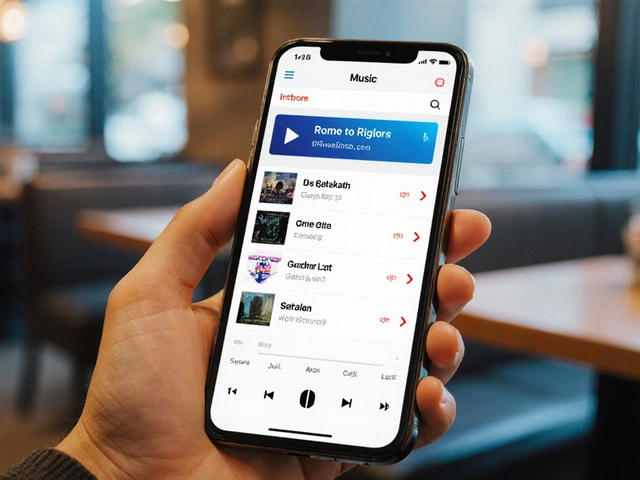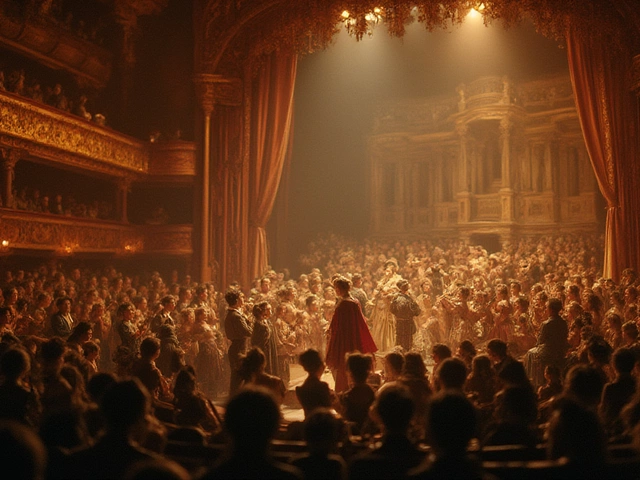Imagine creating a masterpiece that could easily pay your rent—and it actually does. This isn’t some fairy tale. Art sales can hit jaw-dropping numbers, and not just at exclusive auctions. A Banksy piece shredded at Sotheby’s and still sold for $25.4 million. On the flip side, two years ago, a digital artist made $69 million selling an NFT collage from his laptop. The thing is, the ways to sell art—and the profits—have changed dramatically in the last decade. If you’re wondering how artists are cashing in big, and you’re hungry for something that actually works in 2025, you’re in the right place.
The Changing Game: Online vs Offline Art Sales
It’s wild how fast everything shifted. Ten years ago, if you wanted to make real money selling art, you probably pictured a big fancy gallery with wealthy buyers swirling wine glasses, or maybe a booth at a local fair. Now, the best-selling artists might be working from a tiny apartment or a kitchen table. Here’s why: the internet tossed a grenade into the traditional art world. Suddenly, artists could ditch the gatekeepers and sell straight to buyers across the globe. But that doesn’t mean offline is dead — it’s just gotten a lot more focused.
Online marketplaces like Etsy, Saatchi Art, and Artsy make it almost too easy to get started. On Etsy alone, art sales topped $700 million in 2023. Artists have access to tools that were never available before—like instant analytics on what people love, or options to print and ship your work automatically. Even Instagram has become a sales platform, with direct links to shops. In fact, 63% of young collectors now say they bought their first piece of art online, and 41% admit social media influenced their decision.
But there’s a twist. The online world is crowded. Last year, over 10 million artworks were listed for sale on the top five digital art markets. So, just uploading a pretty painting won’t get you paid. Instead, the artists who do best are turning their stories and brands into part of the package. Think of the painter who shares time-lapse videos of every brushstroke, or the sculptor who offers "making of" clips on TikTok—and then links directly to a shop. This authenticity breaks through the noise.
Don’t write off old-school sales, though. People still crave the thrill of seeing art in real life. Pop-up shows, open studios, and even cozy cafes that hang local art can lead to great connections. At some events, buyers are more likely to support artists they can actually talk to—they’ve literally met them. In 2024, a survey showed 72% of buyers at regional art fairs spent more after chatting with creators.
Here’s a quick rundown of where artists are making the most profit these days:
- Online marketplaces (Etsy, Saatchi Art, Artfinder)
- Direct sales through personal websites
- Social media (Instagram Shopping, Facebook Shops)
- Physical galleries or pop-up exhibitions
- Art fairs and markets
- Commissioned projects for private clients
- Licensing art for products (like prints, T-shirts, or home decor)
If you’re not sure which one to pick, plenty of artists combine several. Take the sculptor who showcases pieces at a local gallery, but also sells affordable prints online. Or the mixed media artist who takes custom requests on Instagram and then delivers at art fairs. It’s rare to see an artist stick to one platform for long; diversification is the name of the game.
Let’s make things less abstract. Here’s a snapshot from a 2024 Art Economics Report, showing how average sale values compare by method:
| Channel | Average Sale Value (USD) | Typical Artist Earning |
|---|---|---|
| Direct Website | $850 | 94% (minus payment fees) |
| Online Marketplace | $290 | 70-85% (after platform fees) |
| Physical Gallery | $2,400 | 50% (galleries take the rest) |
| Art Fairs | $370 | 80% (after booth rental) |
| Licensing/Image Sales | $68 per use | 100% (minus licensing agents if any) |
There’s no single silver bullet, but some channels really do bring better profits—if you’re willing to put in the legwork.

Winning Formulas: Standing Out and Making Consistent Profit
The problem with "just list it and they will come" is, well, they usually don’t. Whether you’re selling online or offline, your actual secret weapon is creating real buzz. Branding and storytelling matter even more than what you paint or sculpt. Buyers are looking for a connection—not just something to hang above the couch. Here’s what helps artists build a loyal fan base and land steady sales:
- Own your audience. Social platforms are great, but algorithms change all the time. Smart artists build an email list so they can reach fans directly with new releases, discounts, or behind-the-scenes updates. Short and sweet works best—think teaser videos or quick stories about each piece.
- Authentic storytelling. Share the weird stuff that makes your process unique. I know an oil painter who posts snap photos of her messy studio, glasses askew, with text like, “Day 12: Still fighting with the color green.” People love that stuff—it’s relatable and sticky. They’re buying a piece of your world, not just the finished object.
- Bundle and upsell. Offer your originals—but throw in affordable extras, too. Limited edition prints, sticker sets, or even high-quality digital downloads for people who want art on a budget. It’s not unusual now to see artists making $2,000 a month just off art print sales, keeping 80% or more of the profit because they use print-on-demand tools like Printful or Gelato.
- Offer commissions. The commission game is exploding. A 2023 study showed that 53% of online art buyers either bought a commission or are interested this year. This could mean custom portraits, pet paintings, murals, wall-size abstracts, you name it. Artists usually keep more of the fee—no gallery cut.
- Leverage video. Even short, gritty videos can work wonders. TikTok and Instagram Reels are loaded with artists walking viewers through their process, responding to questions, or even doing “paint with me” livestreams. More eyeballs equals more potential buyers (and many of these platforms pay creators extra for viral hits).
- Collaborate. Team up with other creators for special collections or themed pop-up events. Or join forces with local brands—coffee shops, bookstores, even boutique gyms. These partner spaces often don’t charge to display your work, provided it adds some flair to their spot.
Another tip: think of your pricing like it’s alive. Study what similar art sells for, but also test higher prices from time to time. Some buyers only trust higher ticket art. Ever notice that a $30 mug moves slower than a $300 print at some pop-up markets? Scarcity drives value, too. Try releasing “drops” of new work every month. Hype it up, open a short window for sales, and watch demand (and your email list!) grow.
Here’s a useful list of tools and platforms that top-selling artists swear by in 2025:
- Squarespace or Shopify (for building a personal website/shop)
- Instagram, TikTok, and Pinterest for free visibility
- Etsy, Artfinder, and Saatchi Art for instant market access
- Mailchimp, ConvertKit, or Substack for newsletters
- Printful, Gelato, or Society6 for easy print-on-demand
- Google Sheets or Airtable to track what’s selling best
No matter which route you take, consistency matters. Something as simple as uploading new work every week, or sending a biweekly "art drop" newsletter, keeps momentum (and your name) alive in a buyer’s mind. That artist friend of mine from New York? She started with one sculpture post a week and now has commissions lined up for months.
The bottom line: top earners are relentless in promoting, experimenting, and connecting with buyers. They don’t rely on galleries or luck. Instead, they mix classic hustle with smart digital tools and never stop learning what works.

Real-World Success: Lessons from Artists Who Turned a Profit
Curious how this looks when the rubber meets the road? Let me tell you about a few artists who actually pulled this off—they didn’t have trust funds or celebrity names.
First, there’s Sarah, who paints dreamy cityscapes while raising three kids. She started selling on Etsy in 2019 and couldn’t get much traction—just two sales in her first six months. Instead of quitting, she built a website and began posting speed painting videos on TikTok, showing the messy reality of balancing art and family. Her “Art & Chaos” series went viral, landing her 50k followers and a regular crowd for every product drop. By March 2025, she crossed $80,000 in annual profit, mostly from mid-price prints and a dozen higher ticket originals. She says her best strategy was never chasing trends—just showing up and talking to her fans like real people.
Then you’ve got Leo, a sculptor based outside Austin, Texas. Leo always loved showing his work at outdoor markets but got burned early on by heavy booth fees and flaky buyers. His breakthrough came when he started offering Instagram DMs for custom orders—pet sculptures, family portraits, even bizarre commissions like “a dragon chef battling a lobster.” Leo posts behind-the-scenes videos and shipping day dance parties. He keeps 100% of his sales, never splits with galleries, and uses Shopify for payments. In 2024 he passed six figures, half of it from commissions discovered via social media.
Don’t forget Liz, who started with nothing but an iPad and a dream. She sold her first batch of digital art prints on Society6, earning about $5 apiece. It looked hopeless until she joined forces with a nearby plant shop. Every month, she’d make a small “plant-themed” art run for the shop, splitting profits. Within a year she’d grown her print income to $2,500 a month, plus steady shop commissions. Her secret was building hyper-local connections, keeping her customer base not just online but in her own neighborhood.
If you want some numbers on what works, check out this recent breakdown from a major 2024 artist salary survey:
| Sales Strategy | Percentage of Artists Reporting Profit (2024) |
|---|---|
| Multi-channel (online + offline) | 77% |
| Online only | 61% |
| Offline only | 36% |
The data’s clear: artists who spread out across several channels (like website, marketplace, AND real-life venues), make more, more often. It’s not about picking one thing forever — it’s about staying nimble, using every tool you can, and letting your own personality lead the way. My wife Iris even managed to sell a miniature painting to a collector in Japan because she tossed a quick video up the day she finished it. No gallery, no agent, just a clip and a link.
One big tip: don’t chase “perfect.” Some of the best-selling art isn’t technically perfect—it’s honest, weird, full of life, or tells a story that people want to be a part of. Experiment, try what feels weird, and don’t get discouraged by slow sales in your first months. Selling art for profit is a lot less about insider connections and a lot more about learning the best ways to reach real people willing to pay for what you make.
So, what’s the most profitable way to sell art? Easy answer: it’s the one that puts you face to face (in person or on-screen) with your collectors, gives you control over pricing, and keeps your profits high. Whether you build a powerful website, master your Instagram game, hit up every local market, or all of the above, the smart move is to stay flexible, use the tools at your disposal, and keep sharing what only you can make.



